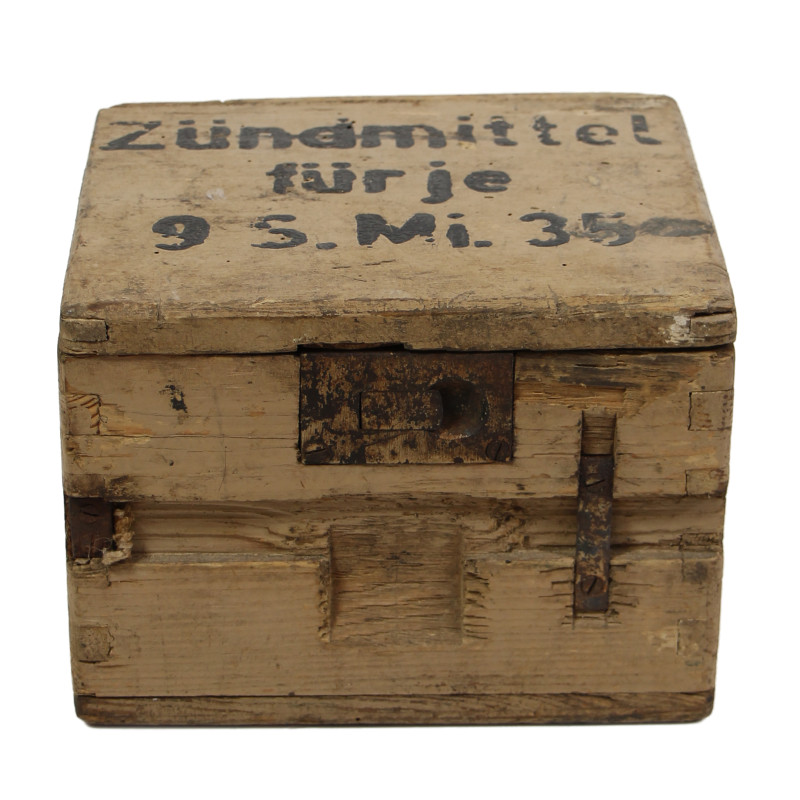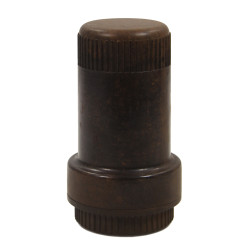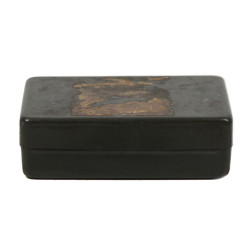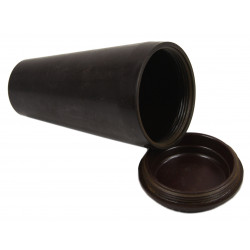











Genuine WWII German wooden box, designed for containing nine fuzes intended for the Schrapnellmine 35 or Sprengen Mine 1935 (antipersonnel mine).
Developed in the 1930s, this 'bouncing' mine was made up of a cylindrical steel canister and a steel body containing some 350 steel balls. Once its mechanism had been activated, the mine would be ejected several feet above the ground before exploding, thus spreading its projectiles within a wide deadly radius.
Quite good, used condition; retains its original label, dated 1943, and some of its paint.
Hinges and latch are in working order.
Dimensions: about 7.5in x 6.3in x 5.5in.
You might also like

Genuine WWII German wooden box, designed for containing nine fuzes intended for the Schrapnellmine 35 or Sprengen Mine 1935 (antipersonnel mine).
Developed in the 1930s, this 'bouncing' mine was made up of a cylindrical steel canister and a steel body containing some 350 steel balls. Once its mechanism had been activated, the mine would be ejected several feet above the ground before exploding, thus spreading its projectiles within a wide deadly radius.
Quite good, used condition; retains its original label, dated 1943, and some of its paint.
Hinges and latch are in working order.
Dimensions: about 7.5in x 6.3in x 5.5in.
The historical artifacts for sale at PARATROOPER’s are intended for collectors, history enthusiasts, historians and museum curators.
These items do not glorify or promote any of the political, ideological or racial opinions related to the global conflicts that bathed the 20th century in blood.
Besides, we remind you that Article R.645-1 of the French Penal Code establishes fines applicable to fifth class contraventions (except in the specific cases of a filming, show or exhibition which refer to historical events) for any individual who wears a uniform, insignia or symbol reminiscent of those worn by members of the various organizations declared criminal in application of Article 9 of the Charter of the International Military Tribunal annexed to the London Agreement of August 8, 1945 – SS, SD, Gestapo, Nazi leaders (the Führer, the Reichsleitung, the Gauleiters and their main collaborators, the Ortsgruppenleiter, the Zellenleiter and the Blockleiter), or reminiscent of those worn by any person found guilty, by a French or International Jurisdiction, of one or several crimes against humanity established by Articles 211-1 to 212-3 or mentioned in Law No. 64-1326 of December 26, 1964.
The Code provides additional penalties, including the confiscation of the items used or intended for committing the offence.



